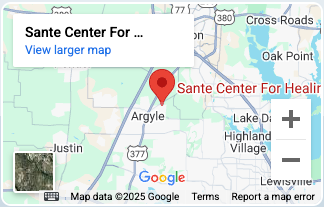When most people think of bulimia, they think of one type of disordered eating. That is, they imagine someone who binges on an excessive amount of food in a short time, then purging that food by vomiting or using laxatives. But this sole view of bulimia is in error. In fact, there are multiple types of the condition that a person suffering from drug and alcohol addiction could experience, including the categories of purging vs non-purging bulimia. To learn more about eating disorder treatment near Dallas, Texas, call us today at 866.238.3154.
About Purging vs. Non-Purging Bulimia
Bulimia, called bulimia nervosa by doctors, is a sometimes-deadly form of disordered eating. It involves cycles of eating very large amounts of food in a binge. Then the individual compensates for this eating through behaviors they believe free them from the effects of their binge. Purging is one group of these behaviors, including self-induced vomiting and using diuretics or laxatives. But another type of bulimia is non-purging bulimia. This is a disorder in which you binge but do not purge through vomiting, diuretics or laxatives. Instead, the person with the non-purging disordered eating uses other compensatory behaviors, such as diet pills or stimulant drugs, fasting and skipping meals, or obsessively exercising.
Why and How People Commit to Either Type of Bulimia
Bulimia is a disorder that can bring deadly results, all in your desire to control both food and your weight. Dealing with this condition while also battling addiction presents an even greater challenge. In the purging form of bulimia, you usually privately perform both rituals of the cycle, the binging and purging. But someone with the non-purging type of bulimia usually binges privately, then engages in their exercising, extremely disciplined dieting or other non-purging behaviors without concern for what others think of their obsession. Because the obsessive exercising or other activities are not seen as secretive or “shameful” like vomiting or overusing laxatives, the non-purging disorder often proves harder to detect. To outsiders, these people simply seem extremely disciplined in physical fitness or highly conscientious about their diet. In another comparison of purging vs non-purging bulimia, people with both conditions lack self-control during binges. They also both suffer intense guilt and shame after the binge, leading them to think very critical thoughts about themselves. People with these disorders tend to feel self-hatred and disgust. Even though non-purging bulimia looks like healthy dieting or exercise to some people, the condition is as damaging as the purging form of bulimia. The two disorders affect the body in different ways with some similar results, including potential death. Only through simultaneous treatment for purging/non-purging bulimia and addiction can you help yourself or someone you love recover from these co-occurring disorders.
Help for Bulimia and Other Forms of Disordered Eating During Addiction Treatment
If you or someone you love suffer bulimia or another type of disordered eating in combination with a drug or alcohol addiction, treatment can help you rebuild life in a healthy relationship with food as you recover. Of course, this treatment must include a range of therapies and programs. The optimum therapies and programs include:
Dual Diagnosis Treatment
Explore our comprehensive dual diagnosis treatment designed to address both addiction and mental health issues simultaneously, ensuring a holistic approach to recovery.
Residential and IOP Programs
Our residential and IOP programs provide flexible options tailored to meet the needs of each individual, allowing for a supportive recovery environment.
Nutritional Therapy
Consider our effective nutritional therapy that emphasizes the importance of healthy eating habits in the healing process, promoting overall well-being.
Family Therapy
Our dedicated family therapists work closely with families to rebuild relationships and create a supportive home environment for recovery.
Trauma Therapy
Engage in transformative trauma therapy that helps individuals process and heal from past experiences, paving the way for a brighter future.
Alumni Program
Participate in enriching social activities and connect with others through our alumni program, fostering a sense of community and ongoing support even after treatment.
Get the Help You Need Today From Santé Center
For help with understanding purging bulimia or non-purging bulimia and how the disorder affects addiction treatment and your life, call Santé Center for Healing in Argyle, TX now at 866.238.3154 or use our online contact form. You can find your way past co-occurring disorders and to the life you truly want. Now is the right time to make that happen.







